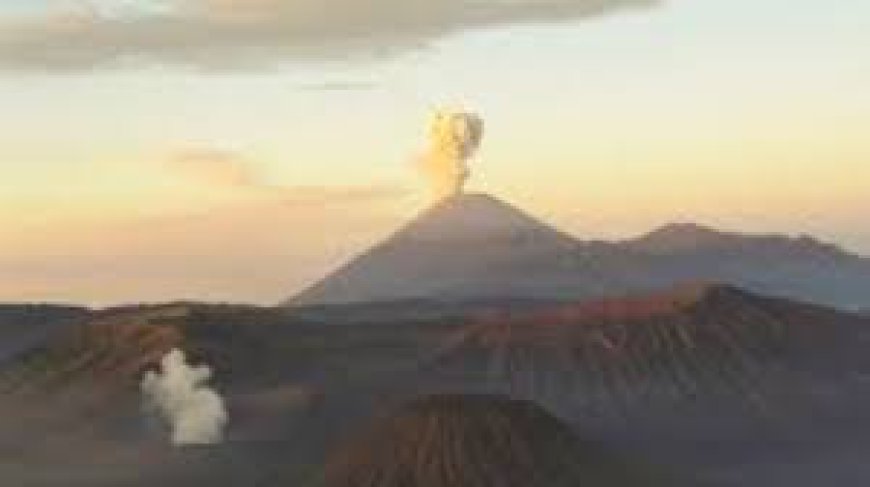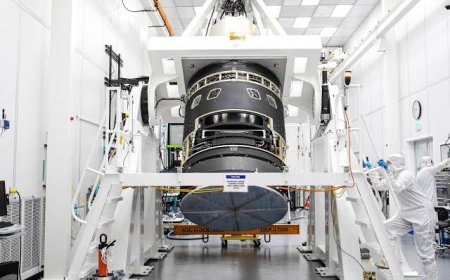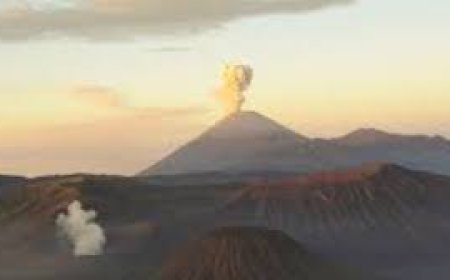The Impact of a Volcanic Eruption on Global Climate
Volcanic eruptions are among the most powerful natural phenomena on Earth, capable of shaping landscapes, altering ecosystems, and influencing weather and climate patterns across the globe. While their immediate effects can be devastating locally, the long-term climatic implications can reach far beyond the eruption site. Understanding these processes is essential for grasping the complexities of Earth's climate system and the interplay between natural and anthropogenic factors.

Volcanoes erupt due to a combination of geological and physical processes. The buildup of pressure from magma rising from the Earth's mantle can lead to explosive eruptions. During an eruption, various materials—including ash, gases, and lava—are expelled into the atmosphere.
The composition of the volcanic materials plays a significant role in determining the eruption's climatic impact. Key components include:
1. Ash: Fine particles that can remain suspended in the atmosphere for extended periods, affecting air quality and weather patterns.
2. Sulfur Dioxide (SO2): A gas that, when released into the stratosphere, can convert into sulfuric acid aerosols, which reflect sunlight and contribute to cooling.
3. Carbon Dioxide (CO2): While released in smaller quantities during eruptions compared to human activities, CO2 can have long-term warming effects.
One of the most catastrophic eruptions in recorded history occurred at Mount Tambora in Indonesia in April 1815. The eruption was so powerful that it ejected an estimated 160 cubic kilometers of material into the atmosphere. The effects were felt worldwide, leading to what is known as the "Year Without a Summer" in 1816.
- The eruption caused a significant drop in global temperatures, estimated at around 0.4 to 0.7 degrees Celsius (0.7 to 1.3 degrees Fahrenheit).
- This temperature drop led to widespread agricultural failures across the Northern Hemisphere, resulting in food shortages and famine. Reports from various regions, including North America and Europe, indicate severe weather anomalies, including frost and snowfall in June.
- The social unrest caused by food shortages sparked migrations, changes in agriculture, and even influenced literary works, such as Mary Shelley’s "Frankenstein," which was conceived during a summer spent indoors due to the cold.
The eruption of Mount Pinatubo in the Philippines in June 1991 was another landmark event that provided crucial insights into the effects of volcanic eruptions on climate. This eruption released approximately 20 million tons of sulfur dioxide into the stratosphere.
Climatic Consequences:
- The injection of sulfur aerosols into the atmosphere led to a global cooling of about 0.5 degrees Celsius (0.9 degrees Fahrenheit) over the next two years.
- Researchers noted significant changes in weather patterns, including altered monsoon seasons in Asia and shifts in tropical storm activity.
- The effects of the eruption were felt in various forms, including brighter sunsets caused by the scattering of sunlight through the aerosols.
Volcanic eruptions have immediate and often devastating effects on local environments and communities. The consequences of an eruption can include:
1. Health Hazards: Ash and gas emissions can lead to respiratory issues, particularly for vulnerable populations. Ashfall can contaminate water supplies and disrupt transportation and infrastructure.
2. Air Travel Disruption: Ash clouds can pose significant risks to aircraft, leading to widespread flight cancellations and rerouting. For example, the eruption of Eyjafjallajökull in Iceland in 2010 caused massive disruptions in air travel across Europe, affecting millions of passengers.
3. Natural Disasters: Eruptions can trigger secondary hazards such as pyroclastic flows, lahars (volcanic mudflows), and tsunamis. The 1980 eruption of Mount St. Helens in the United States produced devastating pyroclastic flows that destroyed vast areas of forest and altered local ecosystems.
While the immediate effects of volcanic eruptions are often well-documented, the long-term climatic consequences are complex and may unfold over years or even decades. Key aspects include:
1. Cooling and Warming Phases: After the initial cooling phase caused by aerosol dispersion, some studies suggest a potential warming trend could follow. This warming may occur as aerosols settle and greenhouse gases persist, leading to an eventual increase in global temperatures.
2. Feedback Loops: Volcanic activity can create feedback loops in the climate system. For instance, cooling can lead to reduced evaporation and changes in cloud formation, which can further influence local and global weather patterns.
3. Altered Ecosystems: Changes in temperature and precipitation can affect ecosystems and biodiversity. Some species may thrive in altered conditions, while others may face extinction. Research has shown that volcanic eruptions can lead to shifts in vegetation patterns, impacting food webs and local fauna.
Volcanoes are a natural part of Earth’s geological processes and play a critical role in the carbon cycle. Over geological timescales, volcanic eruptions contribute to natural climate variability. For example, while modern human activities contribute to increased atmospheric CO2 levels, volcanic activity historically has also released significant amounts of CO2 into the atmosphere.
Geological Perspective:
- The long-term impact of volcanic eruptions on the carbon cycle is evident when considering large-scale events like the Siberian Traps and the Deccan Traps, which were linked to mass extinction events due to their extensive release of greenhouse gases.
Understanding the role of volcanoes in climate change is essential for accurately modeling future climate scenarios. Scientists study past volcanic eruptions through methods such as ice core sampling, sediment analysis, and dendrochronology (tree ring analysis) to gain insights into historical climate conditions. This research helps improve climate models by incorporating natural variability alongside human-induced changes.
Advancements in technology have improved our ability to monitor and predict volcanic activity. Early warning systems and satellite monitoring play critical roles in assessing volcanic hazards and minimizing risks to communities.
Remote Sensing:
- Satellites equipped with sensors can detect changes in volcanic activity, such as thermal anomalies, gas emissions, and ash plumes. These data are crucial for timely evacuations and disaster preparedness.
Ground-Based Monitoring:
- Networks of seismometers, GPS stations, and gas analyzers provide real-time data on volcanic activity. This information is essential for scientists to assess eruption likelihood and potential climatic impacts.
Several recent eruptions highlight the ongoing relevance of volcanic activity in influencing climate:
1. Kilauea (2018): The eruption of Kilauea in Hawaii released large amounts of sulfur dioxide, impacting local air quality. While it did not cause significant global cooling, it served as a reminder of how even smaller eruptions can have localized effects on climate.
2. La Soufrière (2021): The eruption of La Soufrière in Saint Vincent and the Grenadines produced substantial ash clouds that affected air travel and local agriculture. Although its global climatic impact was minimal, it emphasized the need for effective disaster response and climate resilience strategies.
3. Hunga Tonga-Hunga Ha'apai (2022): The underwater volcanic eruption in Tonga created a massive ash cloud that reached the stratosphere. Initial assessments suggest it may have released a significant amount of water vapor, which could influence future climate modeling.
The impact of volcanic eruptions on global climate is a powerful reminder of the interconnectedness of natural processes. While these eruptions can have immediate and localized effects, their influence on global weather patterns can last for years, reshaping climatic conditions across the planet.
As climate change continues to pose challenges for humanity, understanding the role of natural phenomena like volcanic eruptions is crucial for developing effective strategies to mitigate their impacts. The intricate dance between volcanic activity and climate underscores the importance of continued research in this field.
The lessons learned from past volcanic eruptions will undoubtedly contribute to a deeper understanding of the challenges we face in an ever-changing world. As we move forward, integrating knowledge about natural variability with our understanding of anthropogenic influences will be vital for predicting and responding to future climate scenarios.
















































